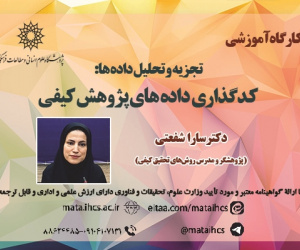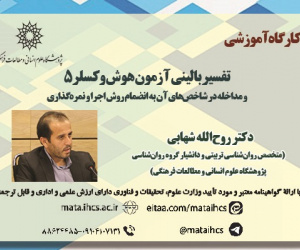بازنمایی عوامل و نشانگان روان شناختی موثر در بروز خطاهای ریاضی دانش آموزان ابتدایی
آرشیو
چکیده
پیشینه و اهداف: مشاهدات میدانی، نتایج آزمون های درون مدرسه ای، آزمون های ملی در درس ریاضی و عملکرد ضعیف دانش آموزان ایرانی در آزمون های بین المللی، نشان می دهد که آموزش و درک ریاضی در دوره ابتدایی با مشکلات متعددی همراه است. به همین دلیل پژوهش حاضر با هدف شناسایی عوامل و نشانه های روان شناختی موثر در بروز یا تشدید خطاهای ریاضی دانش آموزان دوره ی دوم ابتدایی انجام شد. روش ها : بدین منظور از روش پدیدارشناسی توصیفی استفاده گردید و داده ها با استفاده از مصاحبه نیمه ساختار یافته جمع آوردی گردید. مصاحبه شوندگان به روش ملاکی انتخاب شدند و بعد از 23 مصاحبه اشباع داده ها حاصل شد. به منظور افزایش اتکاپذیری، تاییدپذیری، باورپذیری صحت داده ها، از شیوه های «بازبینی در زمان کُدگذاری»، «بهره گیری از نظرات همکاران پژوهشی و تأیید آن ها»، «تبیین جزئیات دقیق فرایند گردآوری و تحلیل داده ها»، «درگیری طولانی مدت»، سه سو سازی و تحلیل موارد منفی استفاده شد. یافته ها: تحلیل داده ها به شناسایی و طبقه بندی سه دسته از عوامل «انگیزشی»، «روانی» و «حافظه ای» منجر گردید و 26 نشانه ی روان شناختی شناسایی شد. نتیجه گیری: بررسی های انجام شده نشان داد دانش آموزان دوره دبستان در یادگیری درس ریاضی با چالش های روان شناختی بسیار زیاد و متنوعی همراه هستند و ادامه این روند می تواند نشاط و پویایی در نظام آموزشی را با آسیب های بسیاری همراه ساخته و تشکیل کارگروهی تخصصی برای جلوگیری از تداوم این تبعات، از ضرورتی انکارناپذیر است.Representation of Psychological Factors and Symptoms of Mathematical Errors in Elementary Students
Background and Objectives: Field observations, the results of in-school tests, national tests in mathematics, as well as the poor performance of Iranian students in international tests, show that teaching and understanding mathematics in the elementary school is associated with many problems. Methods: For this reason, the current research was conducted with the aim of identifying the factors and psychological signs that are effective in the occurrence or exacerbation. for this purpose, descriptive phenomenological method was used and data was collected using semi-structured interview. The interviewees were selected by criteria and after interviewing 23 people (14 teachers and 9 experts), data saturation was achieved. In order to increase the reliability, verifiability, believability of the data, from the methods of "revision at the time of coding", "utilizing the opinions of research colleagues and confirming them", "explaining the detailed details of the data collection and analysis process", "long-term engagement", triangulation and analysis Negative cases were used. Findings: Data analysis led to the identification and classification of 3 categories of "motivational", "psychological" and "memory" factors, and 26 psychological symptoms were identified. Conclusion: The Researches showed that elementary school students have many and varied psychological challenges in learning mathematics. And the continuation of this process can face many damages to the vitality and dynamism of the educational system and the formation of a specialized working group to prevent the continuation of these consequences is an undeniable necessity.







